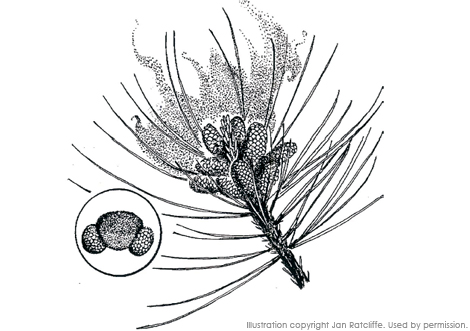Land and Water Conservation Fund Will Expire 9/30/2015
From Federal Parks & Recreation, Vol 32, #17, September 12, 2014:
Hunting and fishing conservation groups last week jumped onto the campaign to extend and strengthen the Land and Water Conservation Fund (LWCF), which is due to expire at the end of September 2015.
Groups ranging from back country hunters to archery enthusiasts combined to detail in a new report the successes of the 50-year old LWCF and the need to renew it.
The hunters and fishermen add a powerful additional voice to the renewal campaign already under way by the Obama administration, park and rec agencies at all levels, environmentalists and other citizens. Of note many hunters and fishermen, if not most, are Republicans and House Republicans are consistently the lead critics of LWCF.
“Yet despite the fund’s many conservation success stories, it has gone underfunded for too long, and many opportunities to improve game and fish resources have been missed due to a perpetual lack of funding,” said Whit Fosburgh, president and CEO of the Theodore Roosevelt Conservation Partnership. “Now is the time for Congress to live up to its commitment and fully fund the LWCF.” President Roosevelt was of course a Republican.
In its report the hunters and fishermen describe 11 major land acquisitions using LWCF money that have benefitted outdoorsmen. For instance, in the MidWest the report says LWCF has contributed $600,000 to help expand the Ottawa National Wildlife Refuge from 5,470 acres to 10,000 acres.
The Ottawa refuge land that contains habitat for waterfowl is threatened with “urbanization, agriculture, invasive species and diking,” says the report, adding that hunting and wildlife viewing in the Lake Erie area produces $1.5 billion in sales and supports 50,000 jobs per year.
In the West the report describes a pending acquisition of Tenderfoot Creek within the Lewis and Clark National Forest in Montana. “This property has been a national priority for us to acquire and transfer to the Forest Service for several years now and we are very close to finishing it. It is a tremendous elk hunting area, and with the elimination of the checkerboard ownership, habitat management for many species should improve,” said Blake Henning, vice president of lands and conservation with the Rocky Mountain Elk Foundation, which led the effort to purchase the land.
The report from the hunting and fishing groups – including The Rocky Mountain Elk Foundation, the Mule Deer Foundation, the National Wild Turkey Federation, Ducks Unlimited and Trout Unlimited – is available at: http://www.trcp.org/images/uploads/wygwam/LWCF_REPORT.pdf.
Meanwhile, the Obama administration continues to lead the campaign for renewal of LWCF. On September 3 Secretary of Interior Sally Jewell marked the 50th Anniversary of the program and the 50th anniversary of the sister Wilderness Act at a ceremony in New Jersey. Three New Jersey House members joined her – Reps. Rodney Frelinghuysen (R-N.J.), Rush Holt (D-N.J.) and Leonard Lance (R-N.J.)
Jewell said the LWCF law authorizes the expenditure of up to $900 million per year from offshore oil and gas revenues, but Congress seldom appropriates a fraction of that much. She said at the event, “$16 billion has been invested, $19 billion has not been invested because it hasn’t been appropriated by Congress, but it’s been authorized.”
Although a significant number of senators from both sides of the aisle support LWCF and have endorsed its renewal, the political outlook for a new, stronger law is a bit cloudy.
By itself LWCF stands little chance in the House, where western Republican critics of the program hold sway in the House Natural Resources Committee.
Perhaps LWCF’s best opportunity lies in a possible package of legislation, and then after the November 4 elections. Now Senate Finance Committee Chairman Wyden is reportedly considering such a package that would reauthorize LWCF in combination with reauthorizing county assistance programs such as Secure Rural Schools and payments-in-lieu of taxes.
Former Sen. Max Baucus (D-Mont.) introduced stand-alone legislation (S 338) last year that would also extend LWCF at $900 million per year in guaranteed money. The money would continue to come from offshore oil and gas revenues.
Meanwhile, the House continues to hammer LWCF in annual appropriations bills, while the Senate is a little more generous. On July 15 the House Appropriations Committee approved a fiscal year 2015 Interior and Related Agencies appropriations bill (HR 5171) that would reduce federal land acquisition by $138 million, from $187 million in fiscal 2014 to $49 million in fiscal 2015.
Leaders of the Senate subcommittee on Interior appropriations August 1 proposed a draft bill that would include $137 million more for federal land acquisition than did the House committee, $186 million to $49 million.
The Senate subcommittee leaders recommended $48 million for the state side of LWCF, or $2 million more than the $46 million the House committee approved in HR 5171.
And as we have reported, some supporters of the Park Service worry that Jewell and company are giving so much emphasis to renewal of LWCF that they are neglecting the Park Service’s 2016 Centennial.




